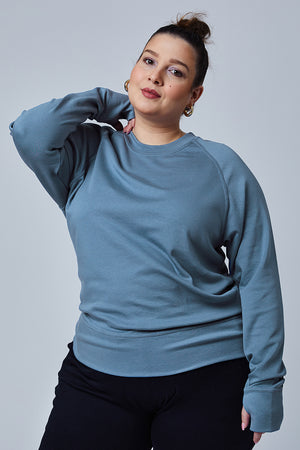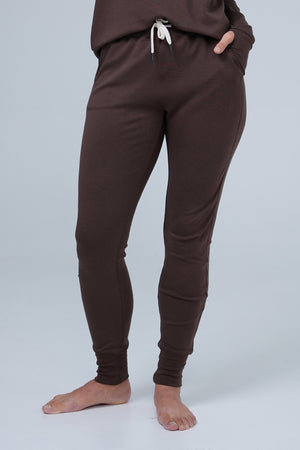stretch those dollars - 5 ways to support a woman- owned business
Women make up 85% of consumer purchases, but their representation as business owners still severely lags today. What is that impact?
To tell the story of the road full of challenges that women-owned businesses face, let’s take a look at the origin story of Madam C.J. Walker.
The Story of C.J. Walker & Her Not-So-Niche Products
In 1905, Sarah (C.J.) Walker noticed that her hair was falling out. She searched for products to treat her condition, but as a black woman, she realized that the existing products targeting white women weren’t formulated for her needs.So, she made her own. And became America’s first black woman millionaire.
She developed lotions, scalp preparations, and special combs that were sold directly to black women. Through her lively salesmanship and pitches, she developed loyal customers. But she also cultivated “beauty culturalists” who, in turn, sold her products effectively. If you think about it, she pioneered influencer marketing by channeling her powerful abilities in self-promotion and evangelism into a growing workforce.
Despite her company’s success, C.J. Walker kept a true spirit of generosity and female empowerment. Her company’s charter stated that only women could be president of her board, and she donated extensively to charities, especially ones that impacted fellow women and people of colour.
This remarkable story is but one example of how investing in women has a profound effect on families, communities and the environment.

1: Women-Owned Businesses are Able to Flourish Despite their lack of Financial Support
Anywhere from 38-45% of new companies are female-owned, but they receive less than 3% of funding from venture capitalists (2.2% in the US to be exact). While women hold majority purchasing power, making decisions for their businesses, their lives, their families and households, female entrepreneurs are still wildly under-represented and supported.Which is contrary to what studies find. This is that when the number of women in leadership positions increases within a company by just 30%, these companies see the benefit of profitability increasing by 15%. Further to this, women have proven themselves to be responsible borrowers as well, repaying 97% of microloans they have received worldwide. What we're finding is that women are able to bootstrap their way into viable businesses, pay back loans and increase profitability in the companies they lead.

2: Women-Owned Businesses Improve Communities
Because women make the majority of purchases globally, they truly hold fiscal power through their purchasing choices. The brands that women choose to buy from (and the companies that receive their dollars) are representative of those economic choices. So, buying from a female-owned company allows for those purchase choices to be consciously directed back to those companies and their communities. We've observed that the money earned in a female-owned business is primarily used for educating their children, providing for their families and growing their business more sustainably than similar male-owned companies.3: Women-Owned Businesses Benefit the Planet
The benefits of female entrepreneurship extend to environmental responsibility. While that sounds like a big statement, we don't have to look very hard to notice that women have been unofficially tasked with taking care of the planet. It seems the traditional role of the caregiver has now extended to include the planet. As society grows increasingly aware of not only individual impact on the environment, we also start paying more attention to a company’s footprint, too.
It has an impact on the fabrics we choose when buying clothing, to the metal straw we keep in our purses, to whether we take the time to sort our recycling and set up a compost bin. We are all becoming more conscious of daily choices, and as a result, we are looking more and more to like-minded companies.
This like-mindedness can be seen in the transparency many companies seek to share with their customers. They are communicating where their products are made, where materials come from, and how the people who produce their products are treated. It has become a point of social responsibility all along the chain, from the initial idea for the product through when it arrives in the customer’s hands (preferably in a recycled or compostable mailer – which we love).
Women-owned businesses are excelling in these metrics, and social and environmental justice are often marked priorities for companies led by women. Female owned companies not only employ more women, but they also tend to hire more women of colour than their male-founded counterparts.
The “eco-gender gap” though, has both cheering positives and insidious pitfalls. Many “eco-friendly” companies market their products toward women. Everything from sustainably produced menstrual products to cosmetics that are increasingly swapping out plastic packaging for aluminum or glass. These more planet-friendly options are good news, but they also demonstrate a frightening pink-washing in the industry, where sustainability and environmental concerns become the responsibility solely of women. Take a walk down the drugstore aisles for men’s products and observe the noticeable lack of eco-friendly products or marketing.
This issue is deep.
A 2016 paper in the Journal of Consumer Research found that “men may be motivated to avoid or even oppose green behaviors in order to safeguard their gender identity.” It seems that the role of caregiver, traditionally assigned to women, has been extended to also include the planet. That’s a heavy burden, but one that many female-owned businesses have embraced and made part of their core values. So, by supporting these female-founded companies—companies that promote ethical production of maxi pads, lipstick tubes, glass cleaner or a great pair of joggers—we are lessening our negative impact on the planet? Hit “Buy Now” on that female-owned company’s website.
4: Women in Positions of Power, Empower other Women—and the Next Generation too
When making a choice to support a female-led company, you are empowering women and their social mandates. You’re supporting female founders, the women employed by the company and the women in your own life. Did you know that female-owned companies are 63% more profitable than similar male-owned companies founded at the same time over a 10-year period?
Studies have shown that when women see other women in leadership that they are more likely to aspire to positions of leadership themselves. Men have spent their whole lives observing other men in leadership positions their entire lives, so it only natural for them to feel that those types of careers are open and accessible to them. However, for women, the visibility of female leadership is still rarer than it should be. For example, around 86% of fashion school graduates are women, yet only 14% of major fashion brands are run by women. What an upside-down world. Girls and women need strong examples of women in charge, and when they see them, imagine their ability to step up like their role models.
5: Spending Money at Women-Owned is a Vote for the Future.
It is becoming more and more popular to put your fashion dollars behind sustainable brands, but what if we, as a society (or as a force of women consumers), also put those same dollars behind female-owned and run businesses? Women-led brands would immediately benefit, we as consumers benefit, and other companies would be pushed to follow the example. Not only could this change encourage companies, but it could inspire women to consider starting their own companies. It could shake up venture capitalists who are deciding where to put their investments. And it could remind consumers that their purchases matter more than just as a transaction.Millions of women are starting businesses across all types of industries. They are employing more women, they are employing more women of colour, and without traditional funding, many are left to do this by bootstrapping their way to success. Supporting these women and the companies they helm is more crucial than ever.
As Madam C.J. Walker said, “Don’t sit down and wait for the opportunities to come, get up and make them.”
What difference will your buying choices make today?

References:
https://www.nytimes.com/2018/05/20/fashion/glass-runway-no-female-ceos.html
http://www.history.com/topics/black-history/madame-c-j-walker
https://entrepreneurship.babson.edu/diana-international-impact-report/
https://www.theguardian.com/environment/2020/feb/06/eco-gender-gap-why-saving-planet-seen-womens-work
https://www.womenseday.org/about-us/our-story/
https://www.marketwatch.com/story/women-owned-businesses-face-a-lack-of-funding-and-heres-how-to-change-this-2019-03-08
https://www.bcg.com/en-us/publications/2019/boost-global-economy-5-trillion-dollar-support-women-entrepreneurs.aspx




